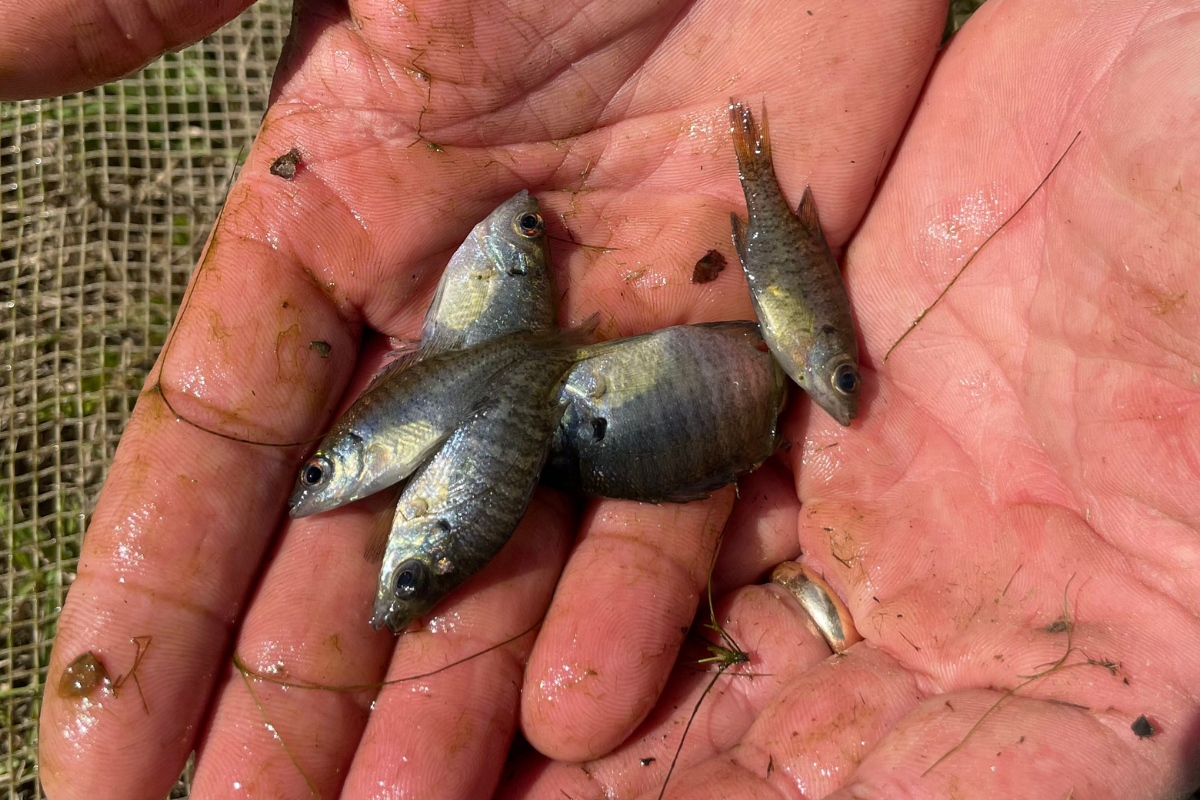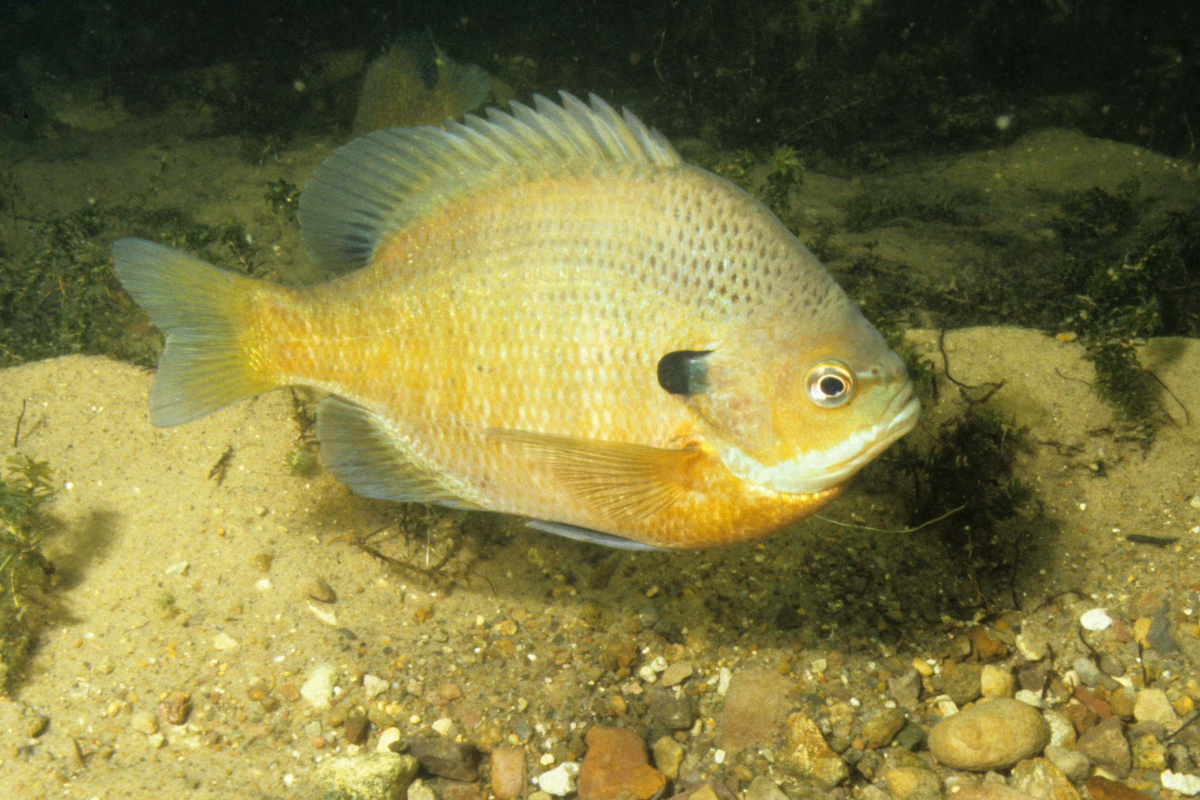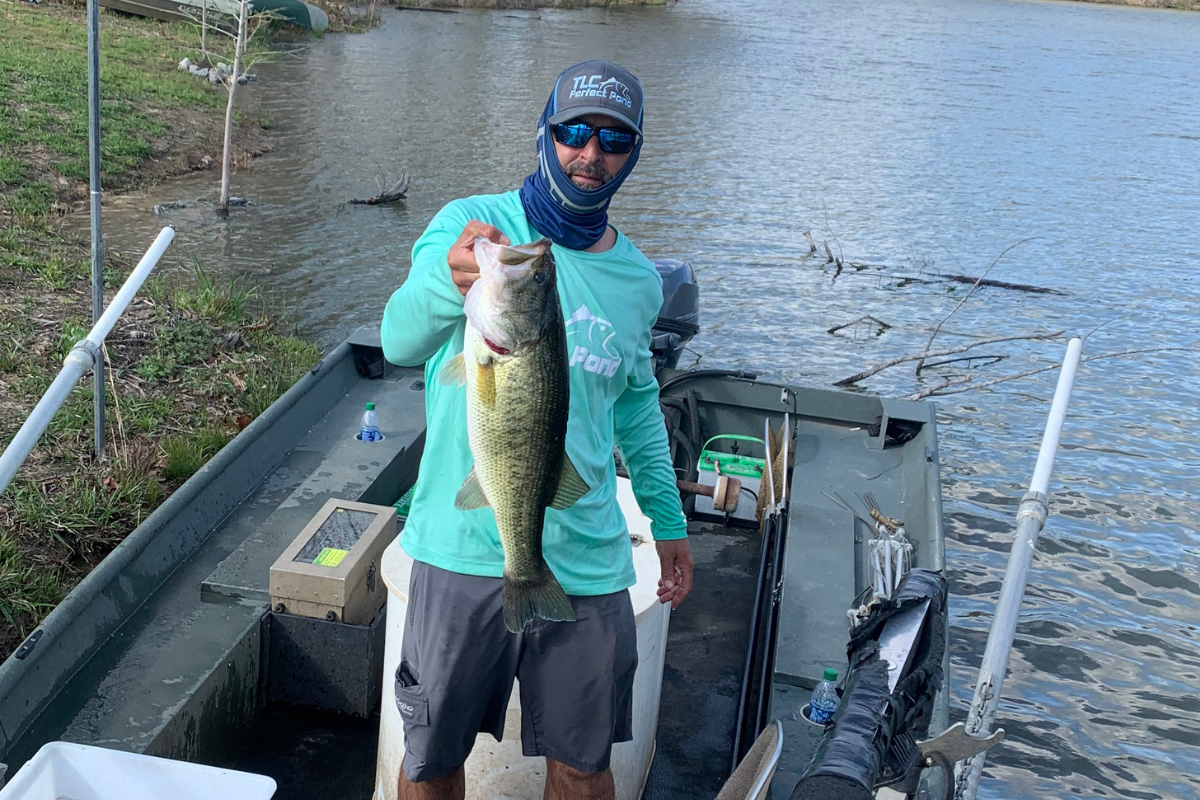What Do Largemouth Bass Need?
If your goal is to create a trophy bass pond, there are several things you need to consider. You need to have adequate ambush habitat for the bass to easily capture prey. You need to ensure that vegetation cover is not too heavy so that bass aren’t having to work too hard to find food. And most importantly, you need to have plenty of prey fish in the pond for them to eat!
Smaller largemouth bass will typically feed on insects and minnows until they get larger. These smaller bass can also be “feed-trained” with an automatic fish feeder. This helps to get them to a larger size more quickly after stocking. When bass get larger though, they want to eat fish. For bass ponds in the southeastern US, that includes bluegill, redear sunfish (aka shellcracker), threadfin shad, and golden shiners.
Largemouth bass are opportunistic feeders. They’ll usually hide in structure and wait on a prey fish to present itself, or slowly cruise along structure lines for their next meal. They won’t typically discriminate between shad, shiners, bluegill, or shellcracker. But one of these is a much better option for stocking a trophy bass pond!

Why Are Bluegill the Best?
Bluegill are hands-down the best option for stocking a sustainable food source in a trophy bass pond. This is primarily due to their spawning frequency. Bluegill fry take about 2 years to become reproductively mature. They’re usually about 3-4″ long at this point. Small bluegill will consume mostly plankton, but larger bluegill will eat insects, small crustaceans, and minnows.
A bluegill can live to be 8-10 years old. During this span, a female could produce hundreds of thousands of eggs. Bluegill usually start spawning when water temps become 72 degrees or warmer in the spring months. They have the potential to continue spawning every 30 days throughout the warmer months until the water temperature cools in fall.
Here in the southeastern US, that spawning period can be along as April through October. Each reproductive event could produce anywhere from 10,000 to 50,000 eggs. Although a majority of those eggs will be eaten, the steady reproduction throughout the warmer months helps to maintain a steady food source in a bass pond.

Stocking Redear Sunfish in a Bass Pond
Redear sunfish are another popular stocking option for bass ponds. Also known as the “shellcracker,” these sunfish feed on snails and other mollusks on the pond bottom. You’ll usually catch these when dangling a worm close to the bottom or on the bottom of a pond or a creek bed. From a pond management perspective, redear sunfish are usually stocked so that mollusk populations can be kept in check.
Although bass will certainly eat redear sunfish, they are not the ideal stocking species if feeding bass if your primary goal. This is because redear sunfish only spawn once a year. They’ll usually spawn in the spring when water temperatures warm, much like bluegill. But that’s usually it. They don’t continue to spawn throughout the warmer months like bluegill. As such new individuals are not being added to the population at the sustainable rate for a population of trophy largemouth bass.
How to Get the Most from Your Bluegill Stocking Efforts
There are some considerations that should be taken before stocking bluegill in a new or established pond. If you are stocking bluegill in a new pond, you should always stock the bluegill prior to stocking any predators like largemouth bass. We recommend stocking bluegill a full year prior to stocking any largemouth bass, but not everyone wants to wait that long.
If you have access to 3-4″ bluegill for stocking, that’s always a huge plus. Although these fish may be more expensive per fish to stock, they’re usually already reproductively mature and will start spawning soon after being added to the pond. You should allow at least one full season of spawning before adding any predators in this situation.
If you are adding bluegill fry to a new pond, you’ll want to wait even longer. As mentioned above, it takes 2 years for bluegill to reach reproductive size. If you introduce predators too early, they’ll likely eat a majority of the bluegill before they’re able to reproduce.
Having a solid feeding program will also help the bluegill grow faster and start reproducing faster. We covered feeding recommendations on a previous blog, and we always recommend fish feeders for newly stocked ponds. The healthier the bluegill, the more eggs they will be able to produce. And the more eggs they produce, the more food you’ll have for your trophy bass population!


